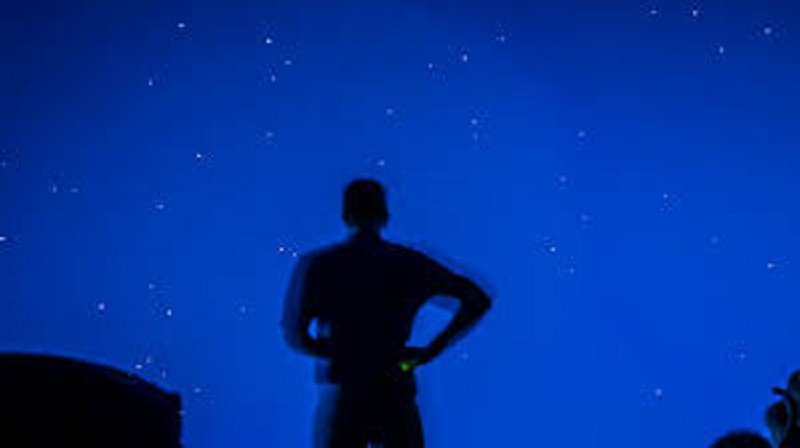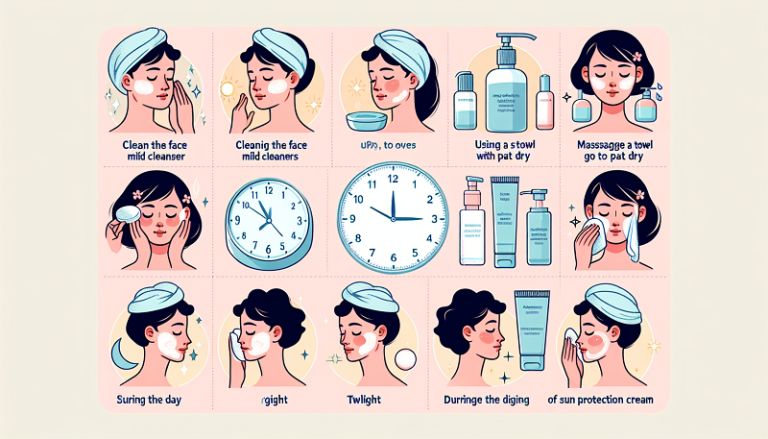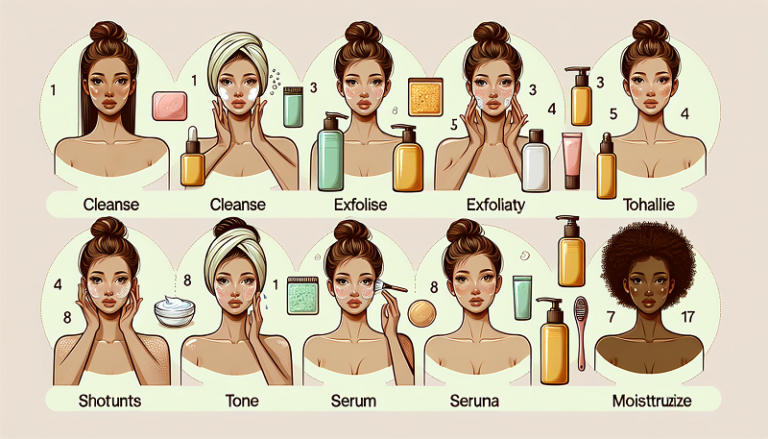In Awe of the Universe: Stargazing – A Hobby That Captivated Me

Introduction to Stargazing
I’ve been hooked on stargazing for as long as I can remember. Being an adventure junkie and nature geek, nothing beats kicking back under the open sky and being awestruck by the universe’s cosmic fireworks. Stargazing is one of those simple joys that doesn’t cost an arm and a leg and can be done solo or with your favorite folks.
Benefits of Stargazing
Getting into stargazing is packed with perks that make it a super satisfying hobby.
Affordability and Accessibility
Stargazing is budget-friendly at its finest. Unlike some hobbies that hit hard on the wallet, stargazing only demands your peepers. No fancy gadgets needed. Whether you’re catching a meteor shower, sizing up constellations, or moon-gazing, you can start by just looking up. If you’re keen for more details, you might dabble with telescopes for a closer peek. (TelescopesPlus.com has more on that if you’re curious).
Educational Value
Stargazing is brain food. It lights the spark of curiosity, especially in young minds who might just end up the astronomers of tomorrow. Sharing the sky’s secrets with your pals or kids can be an enlightening affair and ties together science with a sense of wonder. (TelescopesPlus.com).
Mental Relaxation
There’s something about the calm of stargazing that takes the mind on a mini-vacation from the chaos of everyday life. It’s like a free meditation session wrapped in stardust, reducing stress and boosting your mental mojo.
Physical Benefits
Chasing dark skies to dodge city light often means venturing out to more secluded spots, and that can involve a bit of hiking. This accidental workout is a bonus for your health and a chance to vibe with nature. The Bortle scale helps you find those pitch-black skies, with class 1 as the ultimate starry playground.
Summary of Benefits
| Benefit | Description |
|---|---|
| Affordability and Accessibility | Costs little to nothing, gadgets optional |
| Educational Value | Sparks curiosity and learning |
| Mental Relaxation | Reduces stress, boosts well-being |
| Physical Benefits | Encourages outdoor fun like hiking |
Stargazing is a win for anyone who loves adventure and the great outdoors. Whether you’re bonding with family or just star-tripping on your own, the night sky keeps on giving. If you have a thing for nature, check out gardening as a hobby or go on a birdwatching spree.
Getting Started with Stargazing
Jumping into stargazing was like opening a door to a magical world above us. Here’s my story of how I got hooked and some tips for those ready to lose themselves among the stars.
Joining Stargazing Groups
The best thing I did was join a stargazing group. These clubs are goldmines for meeting fellow sky enthusiasts and soaking up wisdom from experienced star watchers. You’ll find them lighting up the night in places like London, Pennsylvania, DC, Calgary, NYC, and even Dubai (Meetup).
Being in a club perks you up with:
- Swapping Wisdom: Members love sharing tips and tricks that make the stargazing learning curve less steep.
- Testing Gear: Clubs often have gear you can try before committing your cash.
- Mastering Techniques: From hopping between stars to tracing celestial paths, there’s always a cool new trick to learn.
- Making Friends: The camaraderie makes gazing at the stars even more enjoyable (Sky & Telescope).
For other ways to enjoy the great outdoors, check out our pieces on outdoor hobby ideas and birdwatching as a hobby.
Essential Equipment for Beginners
Getting the right kit is a big deal. Here’s my hit-list of must-haves for newbie sky watchers:
- Binoculars
- Star Map or App
- Red Flashlight
- Notebook and Pen
- Comfy Chair or Blanket
Here’s a quick look at these essentials and what they do:
| Equipment | Purpose |
|---|---|
| Binoculars | Make those far-off stars and planets pop |
| Star Map or App | Your guide to navigating that giant night canvas |
| Red Flashlight | Keeps your night vision sharp while you spy maps |
| Notebook and Pen | For jotting down cosmic discoveries |
| Comfy Chair/Blanket | Makes long nights more bearable |
Binoculars: These are perfect for beginners—easy on the wallet and simple to use compared to those fancy telescopes.
Star Maps or Apps: Grab an app to help you find your way among the stars, turning those twinkly dots into familiar friends (Sky & Telescope).
Red Flashlight: A lifesaver for keeping your vision intact at night; regular lights can make it tough to see in the dark.
Notebook and Pen: My constant companions for scribbling down what I see and cool new finds. A logbook of my stargazing adventures.
Comfy Chair or Blanket: A must-have for those extended chill sessions under the stars.
Stargazing’s a blast and a brain workout all at once. By hooking up with groups and getting your gear lined up, you can take those starry nights to the next level. For more thrills under the open sky, check out our outdoor adventure hobbies.
Preparation for Stargazing
Getting ready to gaze at the stars takes a bit more than dusting off your telescope. A little bit of planning can make the night both fun and unforgettable. Let me share the steps I follow to ensure my stargazing nights are successful and enjoyable.
Dressing Appropriately
When you’re stargazing, you’re out in the open, and trust me, the night doesn’t spare anyone—not even in July. So, piling on layers is the way to go. Here’s my tried-and-true wardrobe list for nights out under the cosmos. As Sky at Night Magazine suggests, you’ll want a warm jacket, thick socks, gloves, a scarf, and a hat. If you ask me, thermal clothing is like wrapping yourself in a portable heater. Feels good!
| Clothing Item | Purpose |
|---|---|
| Warm Jacket | Keeps the body warm |
| Thick Socks | Insulates the feet |
| Gloves | Protects hands from the cold |
| Scarf | Keeps the neck warm |
| Hat | Retains head heat |
| Thermal Clothing | Provides overall warmth |
The key is being cozy so you can focus on the stars, rather than shivering like a leaf in the wind.
Choosing the Right Location
Finding the perfect spot is like picking the right couch in the theater. Too many lights will wash out the stars, so aim for a dark corner away from civilization’s glow. Sky at Night Magazine suggests scouting out countryside spots, local parks, or even school playing fields.
Here are some things I always look out for:
- Light Pollution: Fight against city lights by finding the darkest corners around. Dark sky maps or light pollution maps can lead you to the less lit zones.
- Moon Phase: The man in the Moon loves stealing the spotlight. Check the lunar phases; it’s best to stargaze around the new moon phase when it’s dimmed down a bit (NASA).
- Open Views: Wide, open spaces make it easy to take in the universe. Avoid areas packed with trees, high buildings, or other blockades (NASA).
- High Altitudes: Elevation can be your friend, being above all the earthly debris in the air. Climbing a mountain or any raised ground can also snuff out any stray light (NASA).
| Factor | Description |
|---|---|
| Light Pollution | Find the darkest spots away from city lights |
| Moon Phase | Ideal during the two weeks around the new moon |
| Open Views | Go for wide views with nothing blocking the sky |
| High Altitudes | Higher spots keep you above pollution and closer to the stars |
Once you’ve got the layers on and a great spot in mind, you’re all set for a wonderful night of sky-watching.
Looking for more ways to get outdoors? Check out my articles on gardening as a hobby, birdwatching as a hobby, and other outdoor hobby ideas.
Enhancing Your Stargazing Experience
When I first got into stargazing, I figured out pretty fast that a few simple tricks make the whole adventure way more fun and rewarding. Two things I swear by: letting my eyes adjust to the dark and using cool stargazing apps. Trust me, once you try these, you’re in for a treat.
Let Your Eyes Get Cozy with the Dark
If you want to up your stargazing game, start by giving your eyes time to get used to the darkness. You know that magical feeling when the stars pop out like little diamonds? That’s dark adaptation doing its thing. As the folks over at Sky at Night Magazine say, it takes about 30 minutes for your eyes to fully get in the night mode.
To get there quicker, I steer clear of any bright lights. I stick to using a red flashlight because red light doesn’t mess with your night vision. This little hack has seriously upped my star-spotting skills, helping me to soak in more of that cosmic wonder.
Get Techy with Stargazing Apps
Stargazing apps? Oh man, they’re like having a personal tour guide for the skies. These handy apps make finding stars, planets, and constellations a walk in the park. There’s a bunch of them out there, each adding layers of fun and info to the mix.
SkyPortal from Celestron is my top pick. It’s free and does a great job of pointing out celestial goodies and helping plan my stargazing nights (TelescopesPlus.com).
| App Name | Features | Price |
|---|---|---|
| SkyPortal by Celestron | Real-time celestial GPS, session planner | Free |
| Star Walk 2 | Augmented reality, satellite blips | Free (with options to buy more stuff) |
| SkyView | Constellation finder, look-back-in-time feature | Free (got extras for a few bucks) |
Using these apps not only spells out what I’m staring at but also cranks up the fun and learning bit of the hobby.
If you’re looking for other ways to chill in nature, give gardening as a hobby a shot—it’s got similar relaxation vibes. Or if you’re feeling more daring, check out our outdoor adventure hobbies list.
Taking up stargazing has truly been a game-changer for me. By letting my eyes adjust to the night and diving into the world of stargazing apps, the whole experience has turned super enchanting.
Tips for Successful Stargazing
Sharing the Experience
Stargazing, let me tell you, it’s magical, and the magic grows when you share it with someone else. Whether it’s your pals, family, or other folks who love the stars as much as you do, sharing makes everything better and helps you learn a lot more too. When I started, I joined a local stargazing group. We had a blast chatting about the universe. Little communities like these are out there; you can find ’em on social media, community boards, or your friendly neighborhood library. Libraries often have astronomy books and guides to get you started.
Hosting your own stargazing party is a fantastic way to make connections. Bring your telescope, some binoculars, and star maps. Chat about your favorite constellations and swap tales of what each person sees. For some must-see celestial wonders, check out our section on exploring celestial objects.
Don’t be shy about using techy stuff like apps and maps to bring the stars closer. If you’re just getting started, hearing about what others love to gaze upon, like the Moon, Saturn, or the breathtaking Orion Nebula, could fire up your own curiosity and knowledge.
Forecasting Astronomical Conditions
If stargazing success had a secret recipe, knowing the skies would be a huge part of it. You can’t just toss a glance up and hope; you gotta check out the weather, moon phases, and the best times to catch that sparkling show.
Key Factors to Consider
| Factor | Why It Matters |
|---|---|
| Weather Conditions | Clear skies are your best friend. Cloudy? Bad guy. Use a trusty weather app to stay informed. |
| Moon Phases | Full moons are like those bright headlights – they make it hard to see. Catch a new moon for darker skies. |
| Light Pollution | City lights can ruin the fun. Try finding a spot far from all that urban glow. |
Apps are lifesavers here. They’ll keep you up-to-date with what’s going on above, including cloud cover and when you might catch a glimpse of your favorite astronomical wonders. If there’s something you’re dying to see, knowing when it’s out and about can amp up your stargazing game.
If you’re looking to get into the nitty-gritty of celestial navigation, peek at our section on advanced stargazing techniques. We also have some cool stuff about outdoor hobby ideas and outdoor adventure hobbies to keep those nights under the stars exciting.
All said and done, stargazing isn’t just about looking up; it’s about sharing the journey and mixing tools with nature to get the most from those sparkly skies. Let every night be an adventure filled with wonder and learning.
Finding Ideal Stargazing Spots
Finding the perfect stargazing spot’s like finding a hidden treasure. Trust me, a good night under the stars can be a real game changer. So, here’s how I go hunting for the best sky-watching joints.
Ditch the City Lights
Ah, city lights—great for urban selfies, terrible for stargazing. For real celestial beauty, you gotta escape the bright city glare. It’s as if city lights act like a giant scrunchy on the night sky, pulling it tight and fading its stars. When I seek out stars and meteors, I dodge urban lights like I’m avoiding a romcom ending predictably.
NASA’s got your back on this one. Bortle class 3 or 4 is where it’s at: remote, dark spots blessedly free of artificial light. Think rural areas, or even better, wilderness zones. These places keep the night sky’s natural glow alive and well.
| Location | Light Pollution Level |
|---|---|
| City Zones | Blinding |
| Burbs | Mute Button |
| Country Lands | Whisper Quiet |
| Wilderness | Silent Movie |
You might wanna check out nifty apps and websites too. They always know where the dark spots are hiding and can guide you right to them.
Peek at the Moon and Head for the Hills
The Moon isn’t just a ball of cheese; its phase can mess with your stargazing. My pals at NASA drop a strong hint: go stargazing when the Moon’s playing shy around its new phase. A beaming moon can sky your glow, blurring out those faint stars.
| Moon Phase | Star-Gazing Quality |
|---|---|
| Moon’s a Ghost | Starry Heaven |
| Half-Moon | Alrighty Then |
| Bright Moon | Boo, Hiss |
| Waning | Not too Shabby |
Also, here’s a secret not-so-secret: higher ground equals better gazing. Climb up to places where air’s fresher and clearer, like mountains, to wave light pollution goodbye. Think summit-tops or clean-sweeping fields; avoid those sneaky canyons and thick-as-a-literary-class forests that will chop up your view.
When plotting my stellar escapades, I cherry-pick spots that are dark and wide open. The likes of rolling fields, hilltops, and mountain sides are just the ticket.
By picking out the right place, stargazing becomes utterly spellbinding. Whether I’m with a gang on a camping spree or ambling solo into the local open space, a dim and clear sky is a true game-changer. If you’re itchin’ for more hiker haven hobbies, mosey over to outdoor adventure hobbies for some sweet inspo.
Exploring Celestial Objects
Peeking at the stars is one of life’s simplest treasures. The sky, draped in velvet darkness and dotted with a billion sparkling gems, offers more than just a pretty view. Every glance upward reveals stories etched in light years. Today, I’m sharing the highlights from my own celestial adventures, and a few of my top picks for any budding astronomer or night-sky lover.
Popular Celestial Objects
When I kicked off my stargazing escapade, a few dazzling objects captured my imagination right off the bat. Chances are, you’ll find them just as mind-blowing!
| Celestial Object | Description |
|---|---|
| The Moon | Our trusty lunar buddy! It’s always there, flaunting its craters, mountains, and seas. Every phase tells a different tale. |
| Saturn | Oh, the rings! Glorious, isn’t it? Even a budget telescope will show you this marvel. |
| Jupiter | With its swirling storms and four big moons strutting around, Jupiter’s a showstopper. |
| Pleiades | This star cluster, also called the Seven Sisters, is pure magic whether looked at with your own eyes or through binoculars. |
| Orion Nebula | Hiding in Orion’s belt, this baby star nursery is a must-watch for stargazers. |
These celestial wonders are like the all-stars of the night sky. Great for newcomers and for keeping veterans coming back for more (Cloudy Nights).
Enjoying Different Types of Objects
Deep-diving into the night sky eventually led me to a treasure trove of other stunning wonders. Each one has its own wow factor.
Galaxies and Extragalactic Objects
Gazing at galaxies far, far away? Now that’s putting things in perspective. I’m hooked on their spiral arms and star clouds.
- Andromeda Galaxy (M31): Close neighbor alert! See it with your naked eye if the skies are in a good mood.
- Whirlpool Galaxy (M51): It’s got a spiral shape that’s a whole vibe.
Nebulae
These cosmic clouds are a feast for the eyes.
- Dark Nebulae: Caught my eye during summer stargazing. The way shadows play with the starlight is just cool (Cloudy Nights).
- Emission Nebulae: Like the lit-up Orion Nebula, they shine with ionized gas.
Star Clusters
Meet the galactic gangs.
- Open Clusters: The Pleiades are a prime example. Each one looks like a gathering of twinkle-toed dancers (Cloudy Nights).
- Globular Clusters: Messier 13 is basically a grand ball of stars in the sky.
Stargazing never gets dull with these heavenly options. Whether you pick up a pair of binoculars or a telescope, your view will get a serious upgrade. For newcomers, binoculars are your best buddies—a friendly introduction to sky watching (Sky & Telescope).
Going on this star trek can flip an ordinary night into an unforgettable escapade. Before you step out, make sure to check the forecast—we’ve got a guide to keep you up to speed on prime stargazing conditions. Grab your gear, hit the stars, and swap stories with fellow night owls.
Advanced Stargazing Techniques
Gazing up at the sky on a clear night has always lit a spark in me. As my eyes and gear got a little more practiced, I stumbled upon some slick techniques that took my stargazing from “oh look, a constellation” to “holy cow, that’s a whole galaxy!”
Galactic Exploration
There’s nothing quite like casting your gaze upon galaxies far, far away. Observing stuff like galaxies, dust clouds, and star clusters? Experiencing it is akin to indulging in an extensive viewing of the cosmos, yet significantly more captivating. On those warm summer nights, there’s nothing better than spotting those moody dark nebulae in our own Milky Way. The way they block out stars can make you see shapes that make you go “hmm, I wonder if I need glasses?” But nope! It’s just a cosmic illusion. If that doesn’t blow your socks off, try checking out open clusters. These star parties are full of stars having a little get-together, and they give your eyeballs a workout they’ll thank you for.
| Celestial Object | What it is? | When to Gawk |
|---|---|---|
| Dark Nebulae | Mopey dust clouds snuffing light | Summer |
| Open Clusters | Star hoedowns | Year-round |
Finding Celestial Objects
Finding stars isn’t just pointing and shooting—it’s an adventure, my friend. Known as star hopping, this handy trick lets you leapfrog from bright stars to those ghostly faint ones that are playing hard to get. You feel like an absolute legend when you finally track down one of those elusive space gems using nothing but your wits and a star map, ditching all that digital telescope tech.
I’m all about sharing the starlight, so here’s how you do it:
- Grab a good star chart or smartphone app to find your lead stars.
- Start with the stargazing equivalent of low-hanging fruit—start bright, end faint.
- Binoculars aren’t just for bird nerds! They’re gold before grabbing the telescope.
It’s like a treasure hunt up there in the cosmos, and every win feels like striking gold. If you’re vibing nature-based pastimes, do yourself a favor and give this a shot. And if you’re still itching for more nature-y things, mosey on over to our outdoor hobby ideas page for a good time.
Trust me, this kind of stargazing isn’t like pottering about in the garden or checking out the feathered residents with some birdwatching. It’s more hands-on and way more thrilling to boot. So, if you’re all about chasing new experiences and have an eye for nature, sprinkling in some galactic exploration and celestial mapping will add serious spice to your stargazing life. Go find the magic above—your nights will never look the same again.






